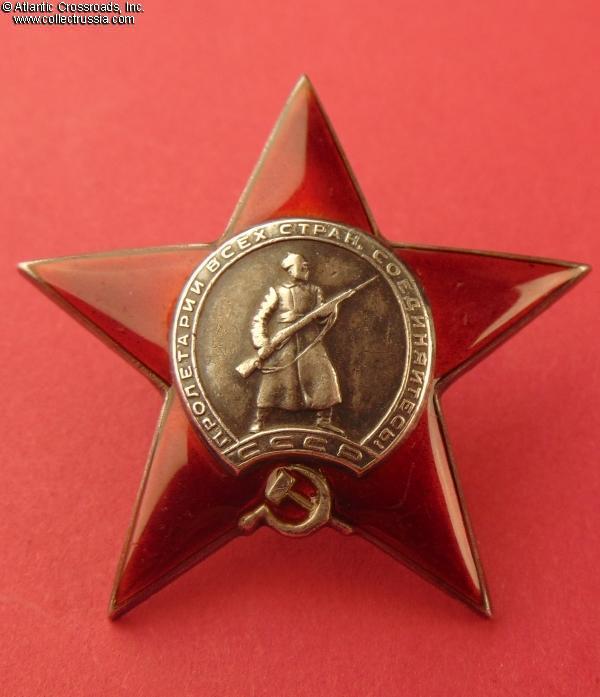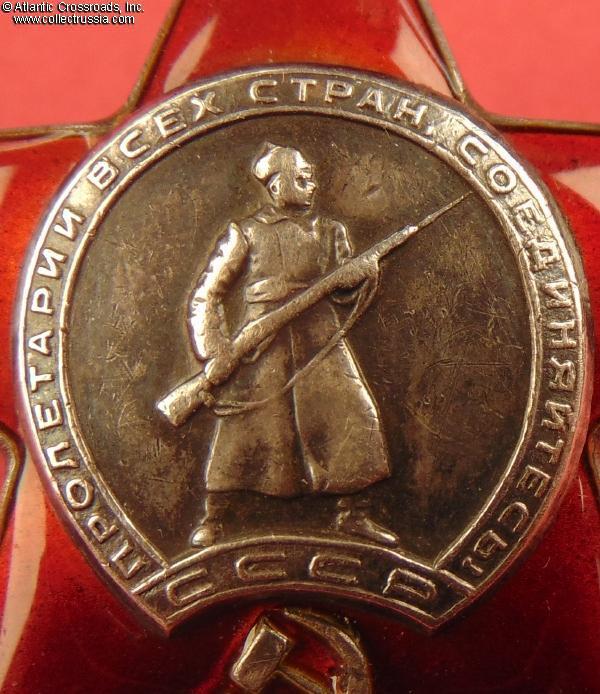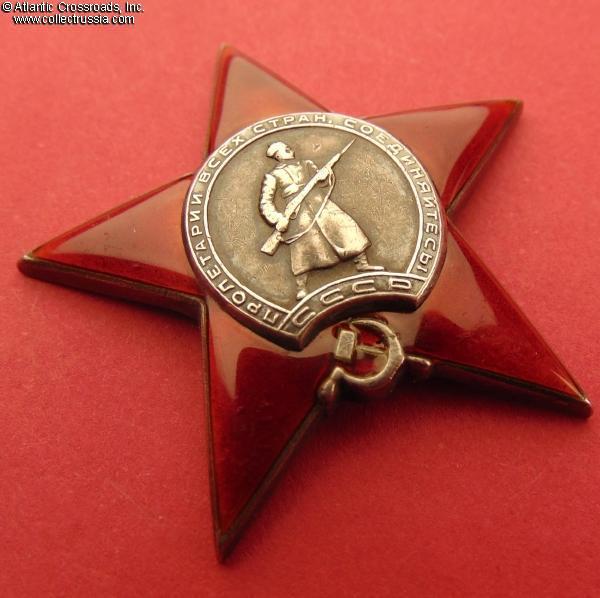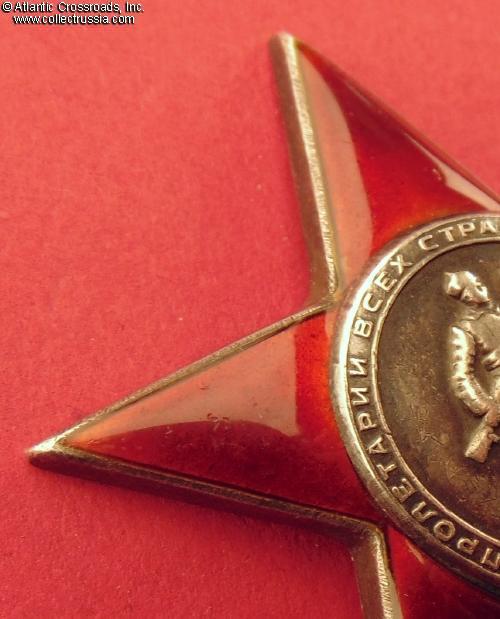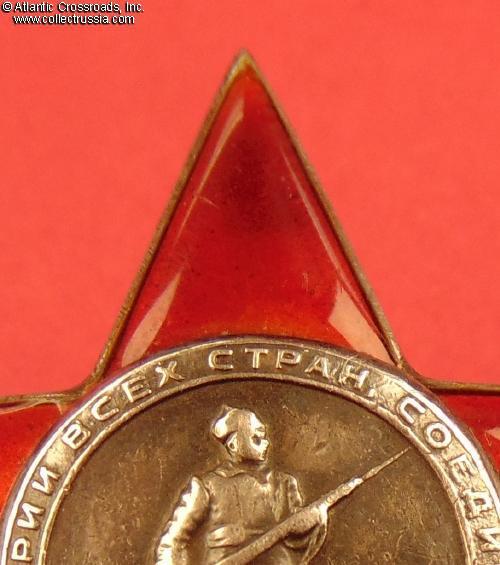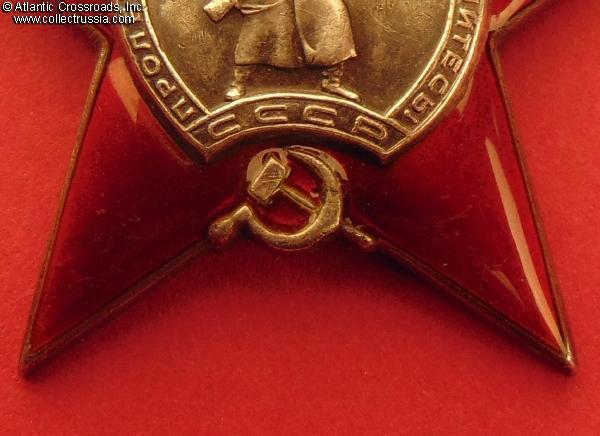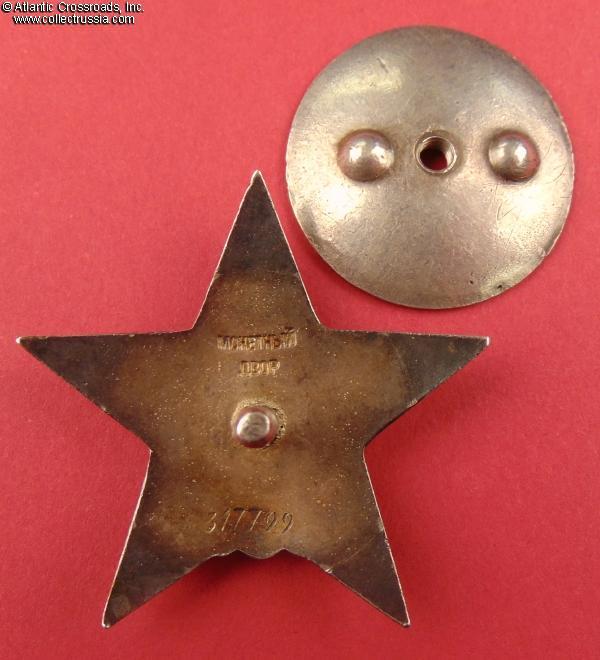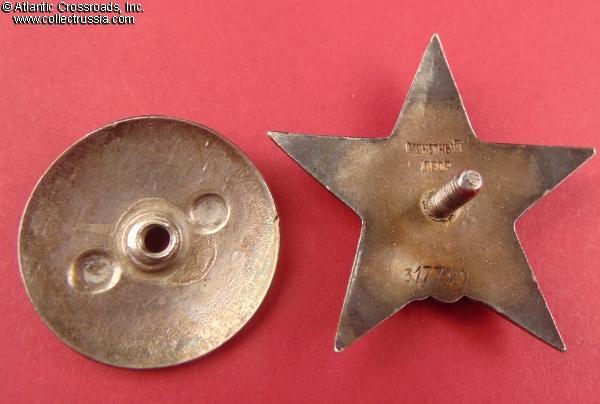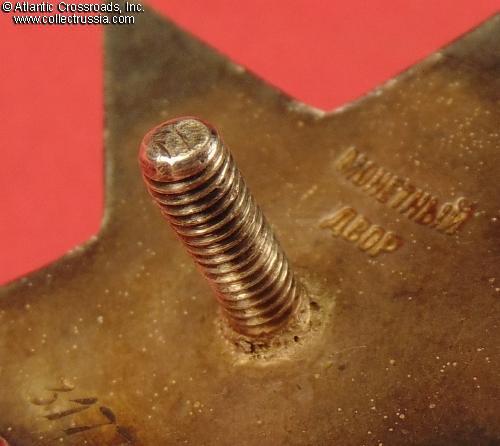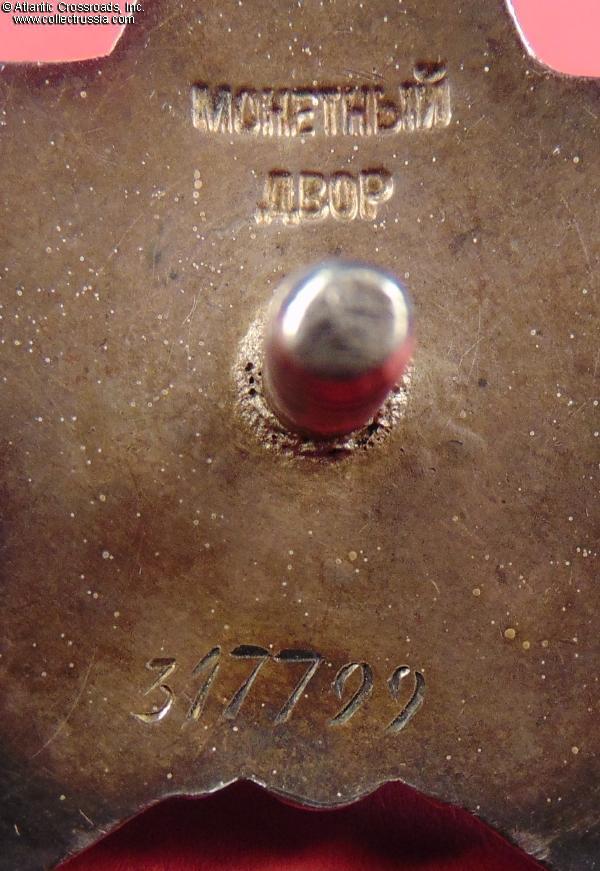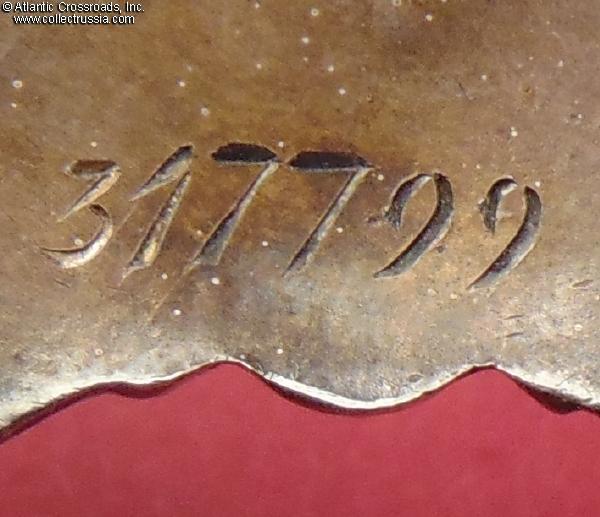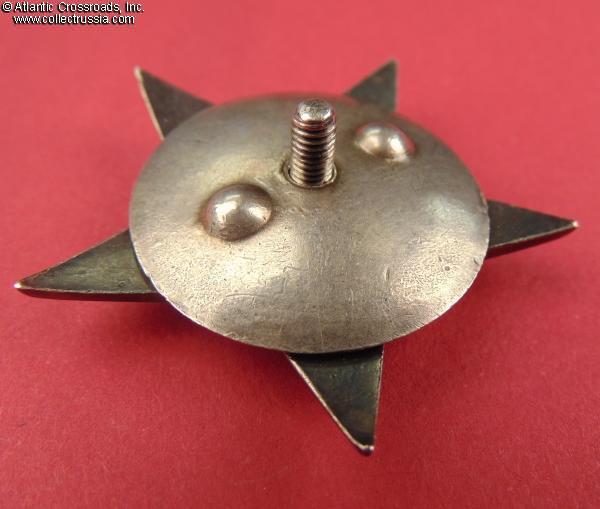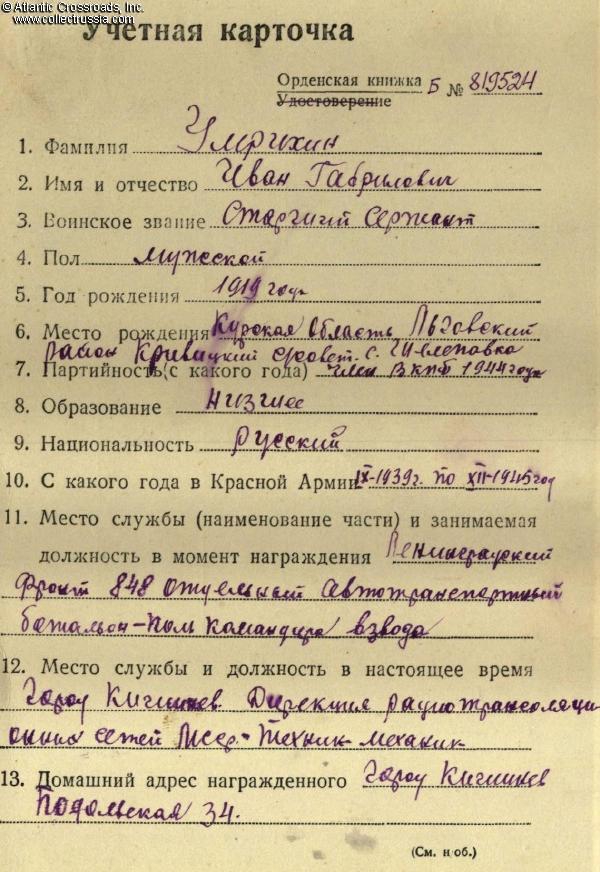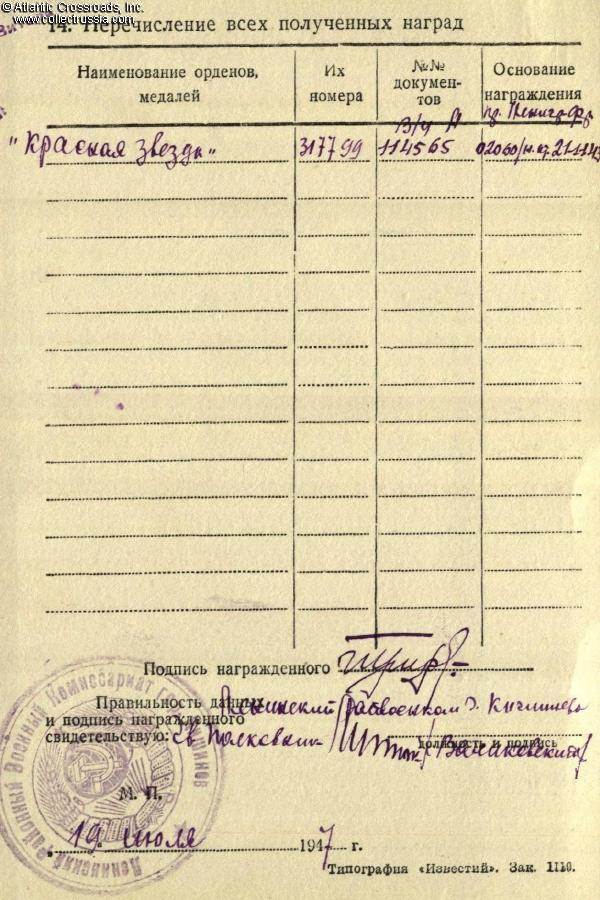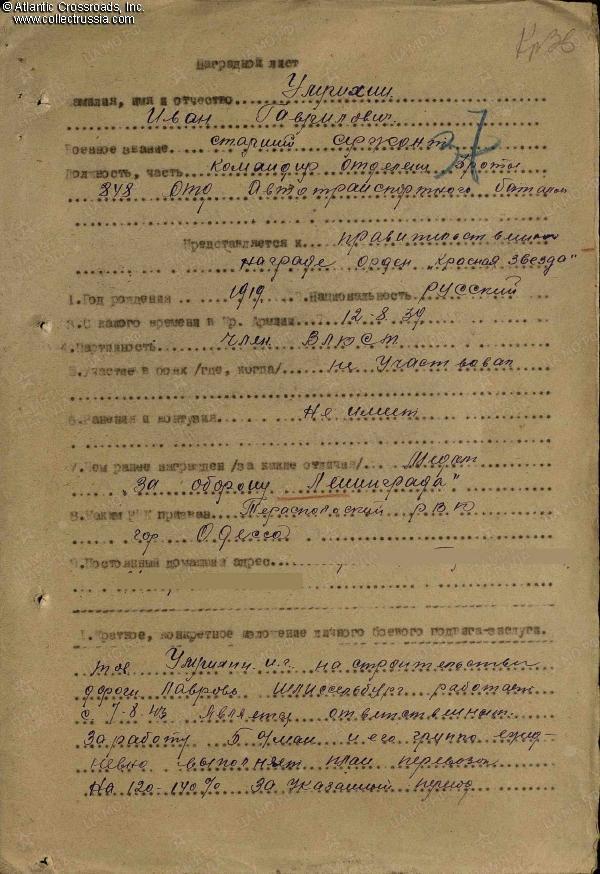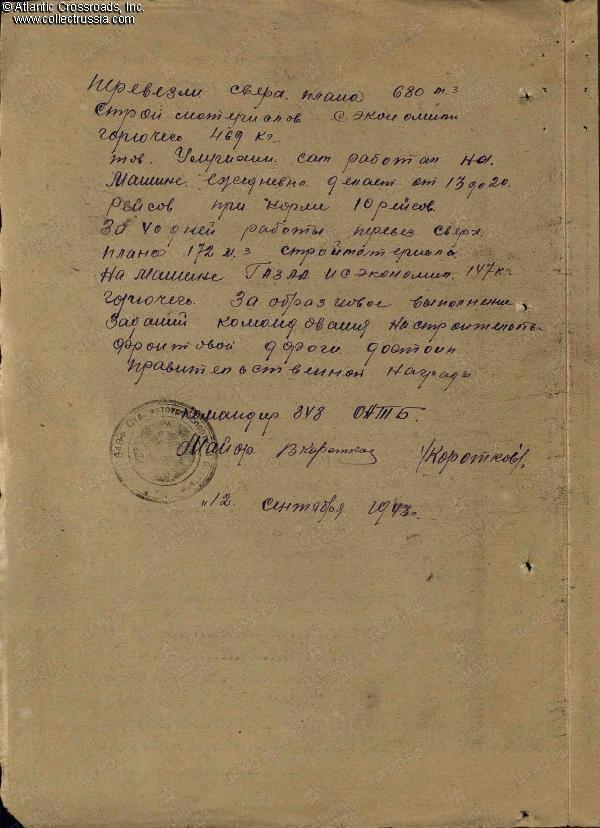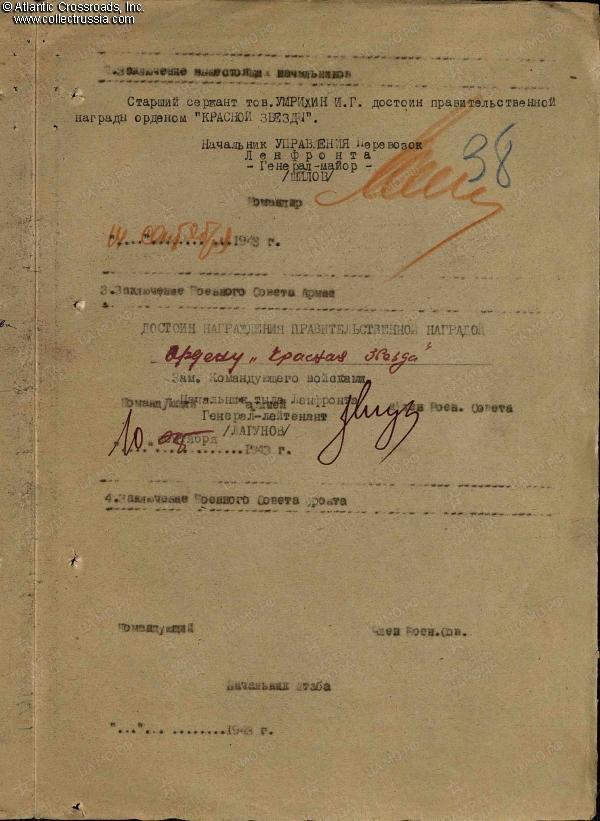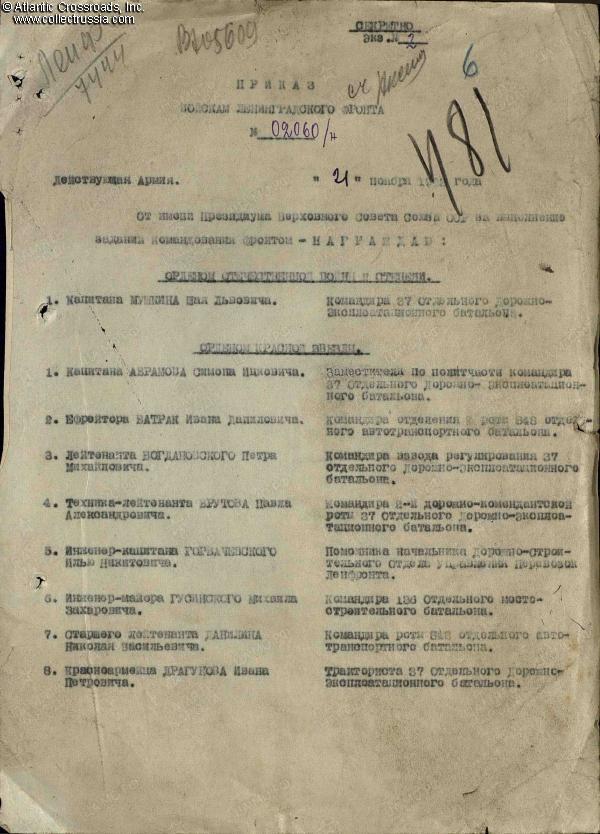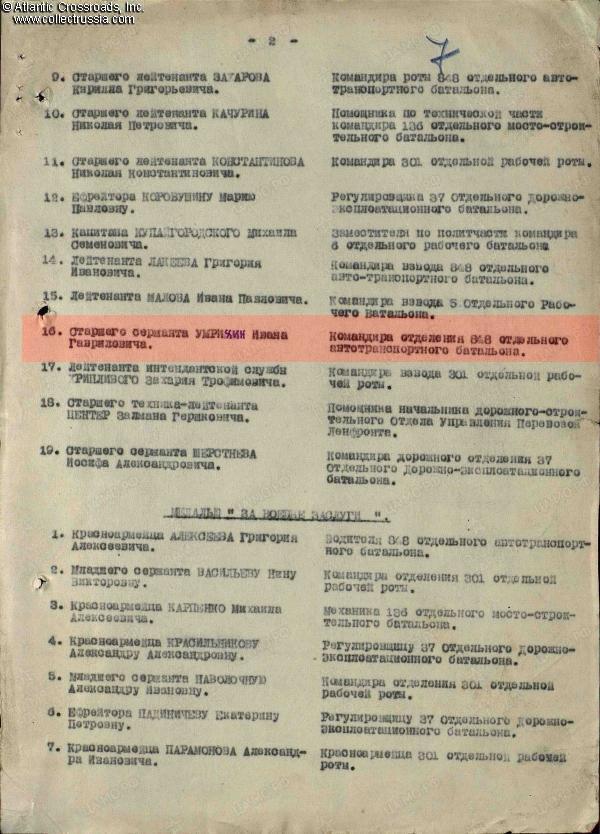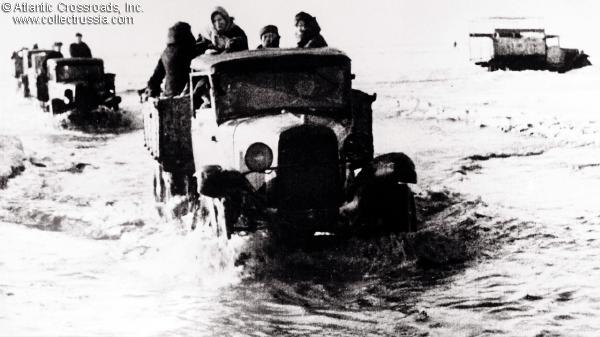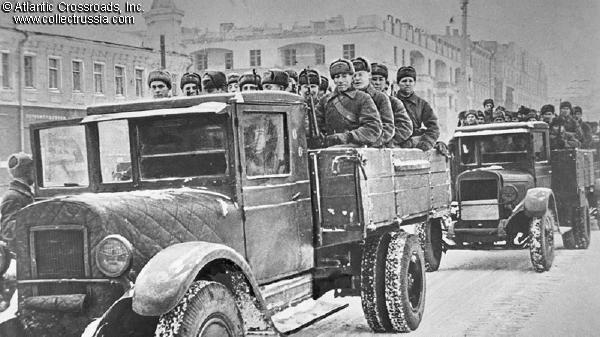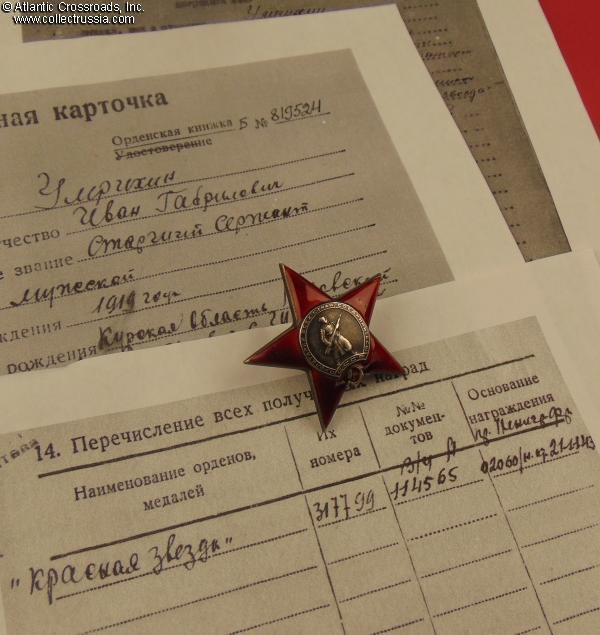Order of the Red Star, Type 6, Variation 1, #317799 awarded on 21 November 1943 to Senior Sergeant Ivan Umrikhin (Иван Гаврилович Умрихин), squad leader of the 848th Separate Automobile Transportation Battalion, Leningrad Front.
Silver, enamel; measures 46.5 mm tall, 48.5 mm wide; weighs 28.0 g not including the screw plate. A beautiful early issue featuring an extremely fine enamel, pointy arms and straight edges. In very fine to excellent condition. The enamel fully retains its magnificent original luster; it is completely free of the usual chips, flaking, or rubbing and has just some miniscule scratches that are barely noticeable. The center medallion is nearly pristine, having only a few tiny dings; its raised details are perfect and exceptionally crisp. There is a very attractive untouched patina to silver on both sides. The screw post is full length, nearly 12.5 mm, and includes an original wartime screw plate in silver.
Ivan Umrikhin was born in 1919 in the village of Shelepovka, Kursk Region. At the age of 20, he joined the Red Army and became a military truck driver. During the Patriotic War, he served in the 848th Separate Automobile Transportation Battalion comprising 600 trucks and subordinated directly to the Leningrad Front command. With his battalion, he drove his GAZ-AA truck over the legendary Road of Life, an ice road across Lake Ladoga, bringing precious supplies to the blockaded Leningraders and taking out the wounded and evacuees.
In August 1943, Umrikhin's battalion was supplying building materials for construction of a new automobile road along the southern shore of Lake Ladoga. between the towns of Lavrovo, the main railhead on the eastern end of the Road of Life, and Shlisselburg, located on the Neva where it flows out of Lake Ladoga. The road was the alternative and continuation of the Road of Life, made possible by the success of almost non-stop Soviet offensives east of Leningrad in the first half of 1943.
In January 1943, Operation Iskra, conducted by the Red Army's Leningrad Front, Volkhov Front and the Baltic Fleet, succeeded in opening a corridor to the besieged city. It was only five-six miles wide but it allowed for construction of a railroad and a dramatic increase in the volume of supplies for Leningrad, evacuation of many of its civilian citizens, and delivery of the armament and munitions manufactured in Leningrad to the frontlines. The railroad was named the Road of Victory. While the blockade still existed elsewhere and was fully broken only at the end of January 1944, this narrow corridor was the lifeline that ensured the city's survival.
The Road of Victory railway however was constantly under German artillery fire leading to large losses in personnel, locomotives, and rail cars - and thus became unofficially known among the railroad workers as the "Road of Death". Once the Soviet offensives on the Sinyavino Heights succeed in widening the corridor by the summer of 1943, the construction of a supplemental automobile road from Lavrovo to Shlisselburg commenced to provide additional relief.
The commendation cites that Umrikhin and his squad overfulfilled the daily norm of transported materials up to 140% while saving a considerable amount of fuel. Umrikhin personally made 13 - 20 runs per day, the norm being 10 runs. Over the period of 40 days starting from 7 August, he transported 172 cubic meters of building materials above the norm. Very impressive, taking into account that the load capacity of the GAZ-AA truck was only 1.5 tons! For Umrikhin's selfless, tireless and efficient work he was recommended by the battalion commander to "a State award" as he non-specifically phrased it, a typical form at the time. Deputy Commander of Leningrad Front, Rear, Lt. Gen. Lagunov then determined to award Umrikhin with the Order of the Red Star. The order, bestowed on 21 November 1943, would remain Umrikhin's only decoration of WW2.
Sr. Sgt. Umrikhin was discharged from the military in December 1945. As of July 1947, when his award record card was filled in, he worked as a mechanic in an organization managing radio communications in Kishinev, capital of Moldavian SSR.
Research Materials: b/w photocopy of the award record card, award commendation, and the pertinent part of the award decree.
Item# 45656
$340.00 Add to cart
